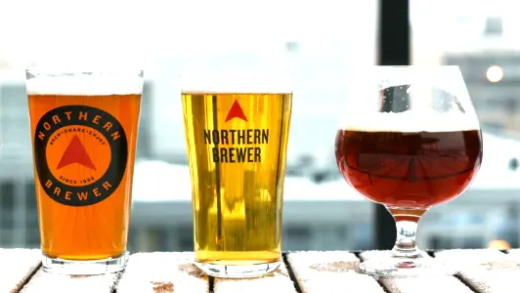GPS technology is essential for navigation, but it faces challenges like weather conditions, common failure scenarios, and the need for regular map updates. Understanding these aspects can enhance navigation experiences and improve reliability. If GPS provides incorrect directions, users should verify inputs and consider alternative routes.
How GPS Technology Works
GPS technology is essential for navigation. It allows users to determine directions accurately. GPS systems determine directions using a network of satellites. These satellites continuously broadcast signals to GPS receivers on the ground. The GPS receiver calculates its position by triangulating signals from at least four satellites. This method is known as trilateration.
For example, if a GPS receiver picks up signals from three satellites, it can pinpoint its location in two dimensions (latitude and longitude). With a fourth satellite, it can also calculate altitude. The precision of GPS technology has transformed travel, enabling drivers to navigate efficiently and find their way even in unfamiliar territories.
Understanding the Need
People need to understand how GPS determines directions to rely on it confidently. Knowing that GPS uses satellite signals for location helps users appreciate its capabilities and limitations. While GPS is incredibly accurate, factors like urban canyons and heavy tree cover can affect performance.
GPS Satellite Communication
GPS satellite communication methods are crucial for the functioning of GPS technology. GPS satellites communicate using radio signals. These signals travel at the speed of light and are received by GPS devices. The communication is one-way; satellites send data, but they do not receive information from the GPS devices.
Each satellite transmits a unique signal containing its location and the precise time the signal was sent. GPS receivers use this data to determine their position. This process happens within seconds, making GPS systems incredibly efficient.
Understanding Satellite Communication
It is essential to understand how satellites communicate with devices on the ground. This knowledge helps users realize why GPS can be affected by various factors, including signal obstructions and atmospheric conditions. The reliability of GPS heavily depends on clear lines of sight to the satellites.
Factors Leading to GPS Inaccuracies
Factors causing GPS inaccuracies can affect navigation significantly. While GPS is generally reliable, several elements can lead to errors in positioning. Common causes include:
- Signal Obstruction: Tall buildings, trees, and mountains can block satellite signals.
- Atmospheric Conditions: Weather phenomena, like storms or heavy rain, can distort signals.
- Multipath Effects: Signals bouncing off surfaces can confuse the receiver.
These inaccuracies can lead to wrong directions or incorrect positioning. Users must be aware of these factors to mitigate potential issues during navigation.
Understanding Inaccuracies
Knowing why GPS can give wrong directions helps users make better navigation decisions. If a GPS device indicates a route that seems incorrect, it might be due to one of the factors mentioned above. Awareness of these inaccuracies can prevent frustration and ensure safer travel.
Why GPS Directs You Down Closed Roads
GPS technology sometimes suggests routes that lead down closed roads. This can happen for several reasons:
- Outdated Map Data: If the map data stored in the GPS device isn’t updated, it may not reflect recent road closures.
- Real-Time Data Limitations: Some GPS systems may not have access to real-time traffic updates, leading to incorrect routing.
- Routing Algorithms: The algorithms used in GPS may prioritize the fastest route without considering road closures.
Understanding why GPS directs you down closed roads is essential for safe navigation. Users should regularly update their GPS maps and be cautious about relying solely on GPS for routing, especially in unfamiliar areas.
Impact of Traffic Updates on GPS
Traffic updates are crucial for enhancing GPS routing accuracy. These updates provide real-time information about road conditions, accidents, and traffic jams. Here’s how they impact GPS:
- Dynamic Routing: GPS systems can adjust routes based on current traffic conditions, potentially saving time.
- Alternative Routes: When heavy traffic is detected, GPS can suggest alternative paths to avoid delays.
- Timeliness: The effectiveness of these updates relies on how quickly the information is processed and relayed to users.
Staying informed about traffic updates allows users to make better navigation choices. Regularly checking for updates can lead to a smoother travel experience.
Role of Map Data in GPS Accuracy
Map data plays a vital role in GPS accuracy. The precision of GPS navigation heavily depends on the quality and currency of the map data. Key factors include:
- Data Completeness: Comprehensive map data ensures that all roads, landmarks, and points of interest are included.
- Data Updates: Frequent updates help maintain accuracy, reflecting changes like new roads or construction.
- Geographic Information: Detailed geographic information enhances GPS systems’ ability to pinpoint locations accurately.
Understanding the role of map data in GPS accuracy helps users appreciate the technology’s strengths and limitations. Regularly updating map data is essential for optimal GPS performance.
Weather Effects on GPS Performance
GPS technology can be affected by various weather conditions, which may impact its performance. Weather effects on GPS performance include:
- Heavy Rain or Snow: Precipitation can absorb GPS signals, leading to reduced accuracy.
- Fog: Thick fog can scatter signals, resulting in inaccuracies in positioning.
- Atmospheric Disturbances: Solar flares and ionospheric conditions can disrupt signal transmission.
Understanding how weather affects GPS performance is crucial for users who depend on accurate navigation. It is advisable to check weather conditions before relying on GPS for travel.
Common Scenarios Where GPS Fails
GPS can fail in specific scenarios, leading to confusion and frustration. Common scenarios include:
- Urban Canyons: Tall buildings can block signals, causing inaccuracies.
- Rural Areas: In remote locations, GPS signals may be weak or unavailable.
- Indoors: GPS typically does not function well inside buildings due to signal obstruction.
Being aware of these common failures can help users take alternative navigation measures when necessary. In such situations, having a backup navigation method can be beneficial.
GPS Map Update Frequency
The frequency of GPS map updates is vital for maintaining accurate navigation. Many GPS systems require regular updates to ensure the map data reflects current road conditions. Factors affecting map update frequency include:
- Manufacturer Guidelines: Different GPS devices have varying recommendations for update frequency.
- Road Changes: Frequent updates are necessary in areas with ongoing construction or new road developments.
- Software Updates: Regular software updates can enhance GPS functionality and improve accuracy.
To ensure optimal performance, users should check their GPS settings and update maps as needed. Regular updates help avoid navigation errors and ensure the device provides the best routes available.
What to Do If GPS Gives Wrong Directions
If a GPS gives wrong directions, it’s important to stay calm and assess the situation. Here are steps to take:
- Double-Check the Input: Ensure the destination and settings are correct in the GPS device.
- Look for Alternative Routes: Use a map or other navigation app for verification.
- Update the Device: Ensure that the GPS software and maps are up to date.
By following these steps, users can troubleshoot GPS issues and make informed decisions during navigation. Being proactive can prevent unnecessary delays and confusion while traveling.





Comments are closed.